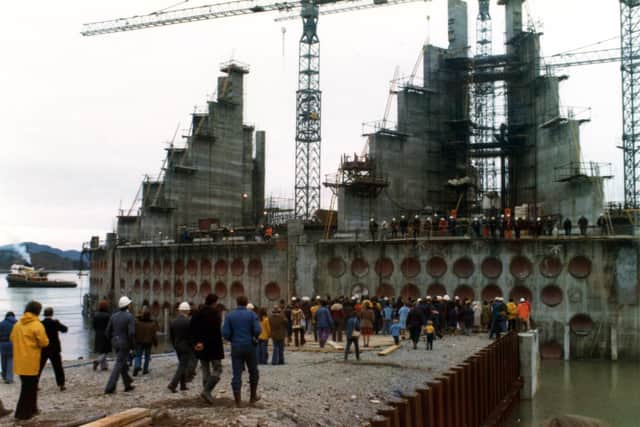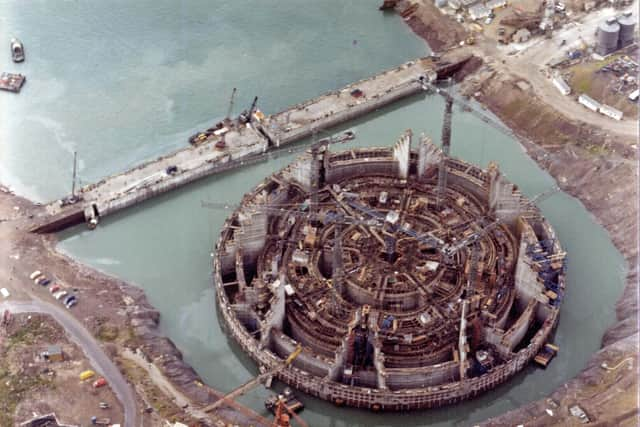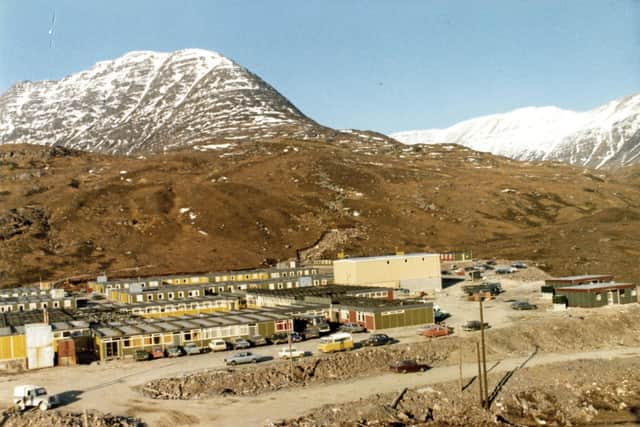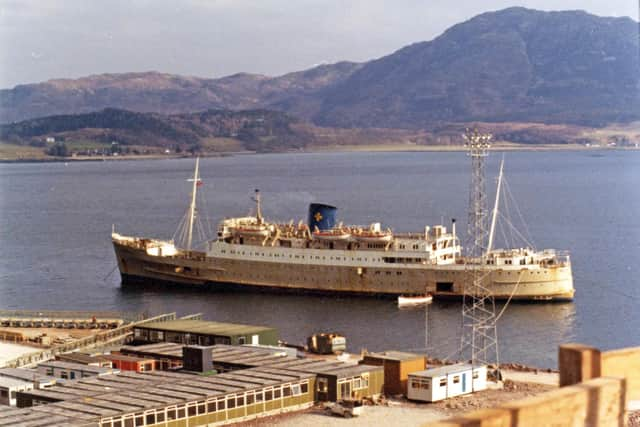When 3,000 men were drawn to the Highlands to work for up to £2,000 a week


It was once a quiet corner of the country where sprat fisherman worked the loch and life on the water’s edge ticked along at a pleasing Highland pace.
All that changed at Loch Kishorn in Wester Ross in the mid-1970s when it became home to a giant operation to construct what was then the world’s
Advertisement
Hide AdAdvertisement
Hide Adlargest man-made moveable object – the Ninian Central platfrom that would support oil production in the North Sea.


Tranquillity gave way to a new industrial landscape in the north west and the sparsely populated area suddenly was home to 3,000 more workers who headed to Loch Kishorn from all over the country, drawn to 16 hours days and a two-week rotation by a pay packet of around £2,000 a week at today’s values.
A new workers village was created to cope with demand for accommodation with two retired cruise liners, the Rangatira and the Odysses, brought by construction company Howard Doris Ltd to house hundreds of employees.


Some bungalows were built in Lochcarron but caravans and tents also sprung up as temporary employees moved in.
‘Cowboy country’ was how one resident at the time remembered it.
The Ninian days at Loch Kishorn were documented by late engineer Chris Hamilton, who himself worked at the yard in the mid- to late-1970s.
The photographs have now been deposited with the Am Baile archive of Highland life and culture by his wife, Trisha, who recalled how the family


relocated from Cambridgeshire to the Highlands as construction of the Ninian Central Platform got under way.
Advertisement
Hide AdAdvertisement
Hide AdMrs Hamilton, now of Inverness, said: “There was a big slump in the economy at the time and there were no jobs – expect at Kishorn. There were a lot of people came up from London to work – I remember around 500 caravans being parked around Kishorn.
“I remember the workers used to travel at great speeds on the road. They would travel two cars at a time, so if there was an accident, they could pick each up. It was a bit like cowboy country.”
Local residents also took the chance to work at the yard.


“The area at the time was very much a Free Church area. You really weren’t even meant to peel a potato on a Sunday but that was all put aside when the yard opened. People were desperate for money but afterwards, things went back to the way they were.”
The Kishorn Yard was developed as a manufacturing and fabrication yard for oil platforms and operated for 12 years from 1975. It was later used to construct the supports for the Skye Bridge and then, after 23 years vacant, became the central construction site for the Kincardine Offshore Windfarm Project. It is still in use today.
In 1975, work began on the north side of Loch Kishorn to construct a 150-metre wide dry dock to house the first layer of the Ninian Central Platform.
As the landscape started to change, daily supplies of cement, gravel and sand arrived by sea from Stromferry with the waterborne deliveries on occasion bringing those at the helm of the yard into conflict with the sprat fisherman who had worked the loch for generations.
Construction continued 52 weeks a year with temporary workers brought in from around the country to prevent the job from halting over the Christmas holidays in 1976. An advert in the Birmingham Daily Post in December 1976 called for “tough men for tough jobs” with £300 – around £2,200 –- offered a week.
The structure, which weighed 600,000 tonnes and stood 200 metres high, required seven tugs to tow it from Loch Kishorn to its North Sea site. When in


Advertisement
Hide AdAdvertisement
Hide Adplace, the platform supported production on the Ninian Southern and Ninian Northern platforms.
Soon, it will be broken up and decommissioned after 40 years service.
A message from the Editor:Thank you for reading this story on our website. While I have your attention, I also have an important request to make of you.With the coronavirus lockdown having a major impact on many of our advertisers - and consequently the revenue we receive - we are more reliant than ever on you taking out a digital subscription.Subscribe to scotsman.com and enjoy unlimited access to Scottish news and information online and on our app. With a digital subscription, you can read more than 5 articles, see fewer ads, enjoy faster load times, and get access to exclusive newsletters and content. Visit https://www.scotsman.com/subscriptions now to sign up.
Our journalism costs money and we rely on advertising, print and digital revenues to help to support them. By supporting us, we are able to support you in providing trusted, fact-checked content for this website.
Joy Yates
Editorial Director